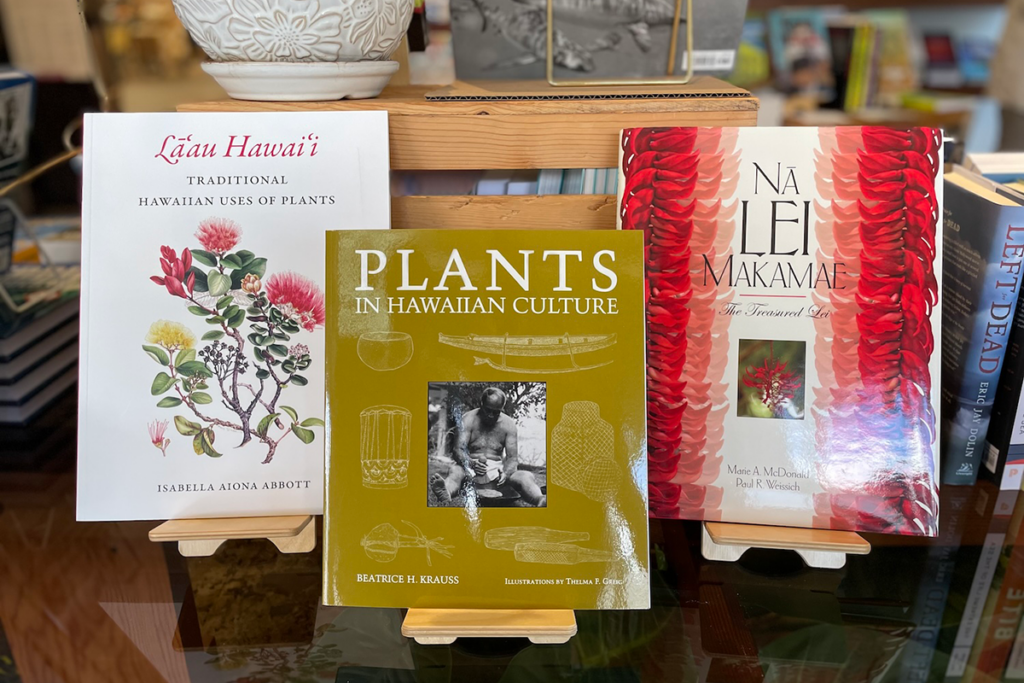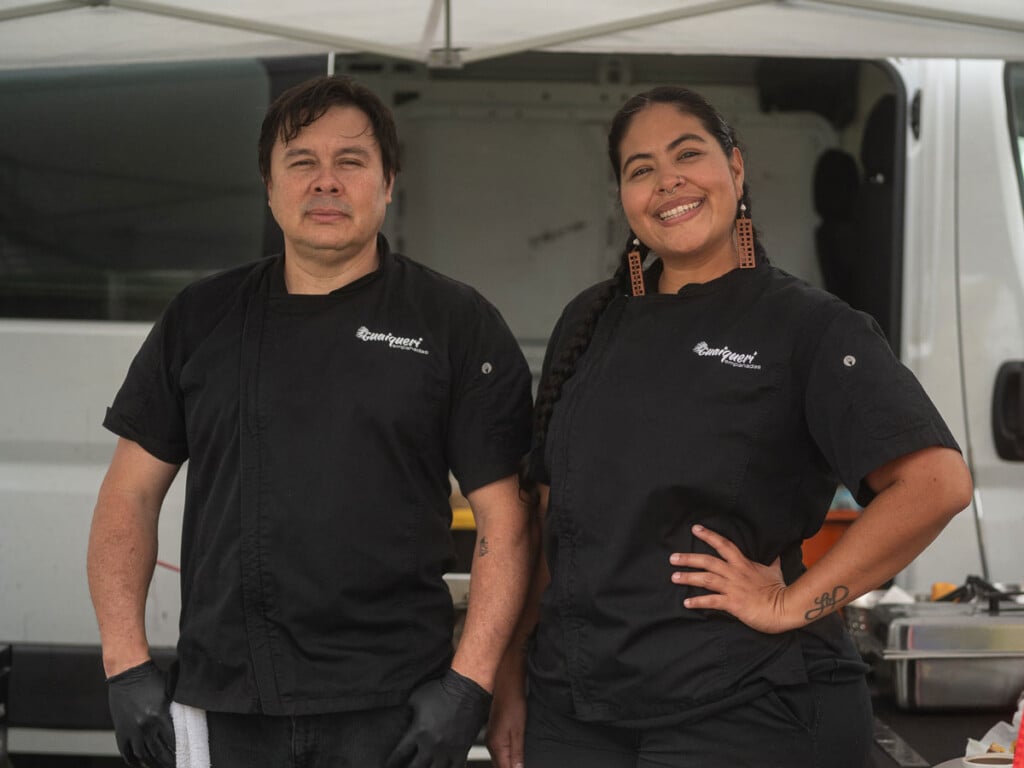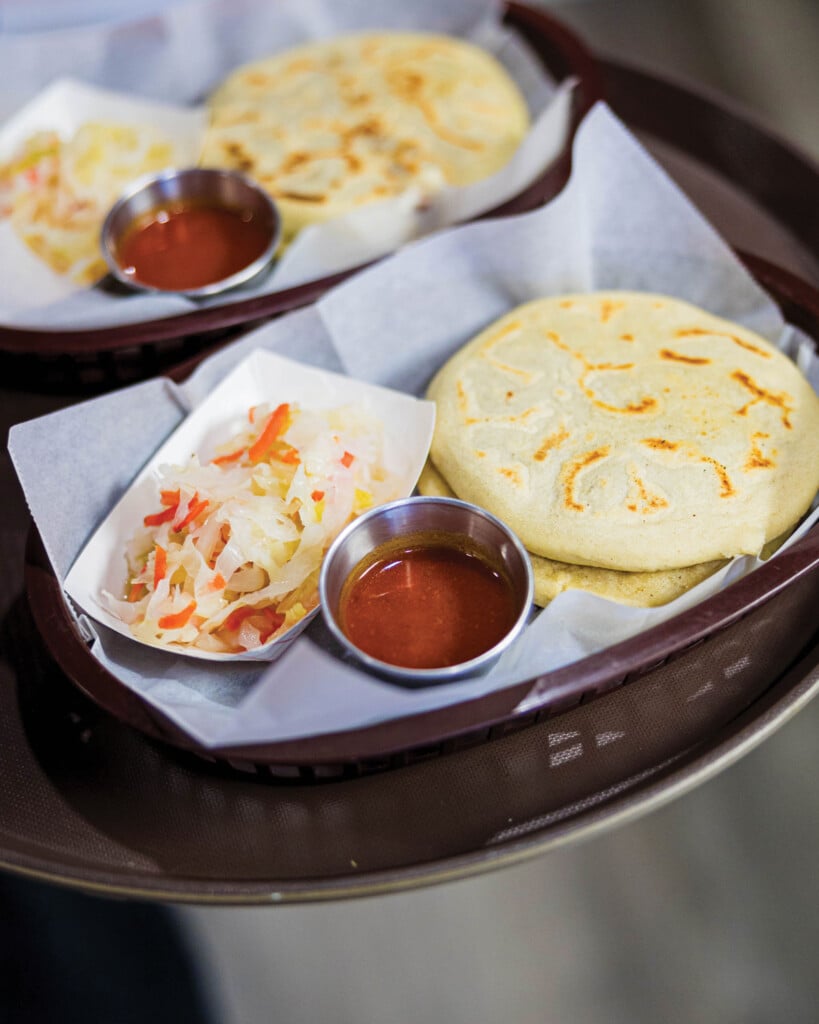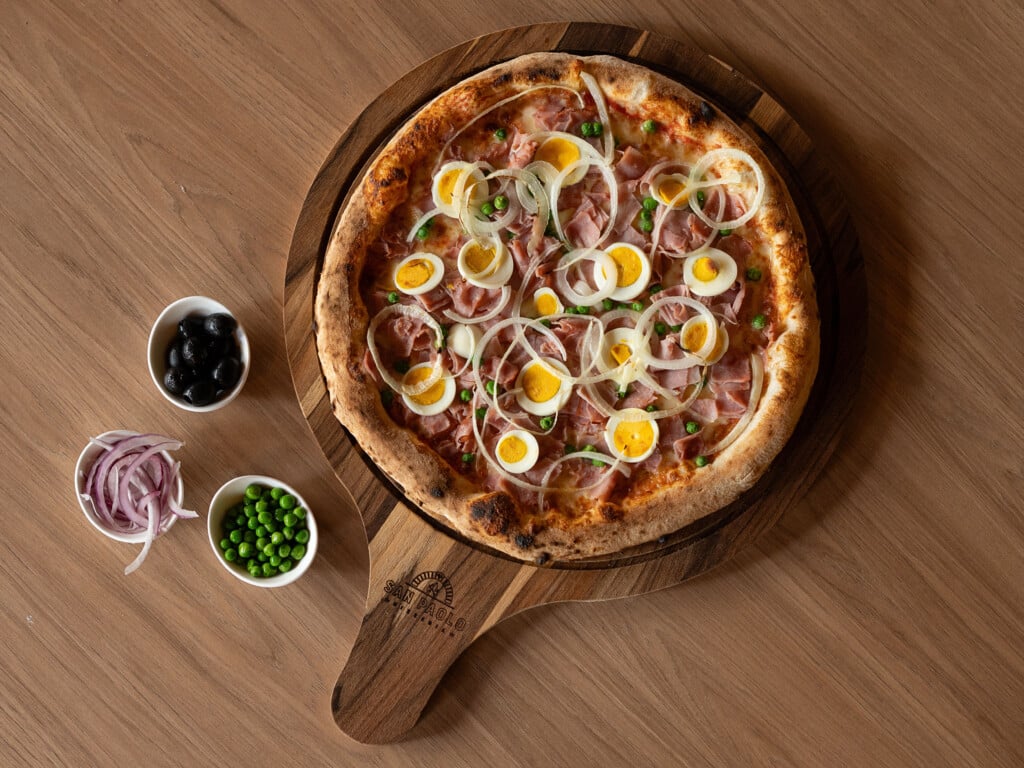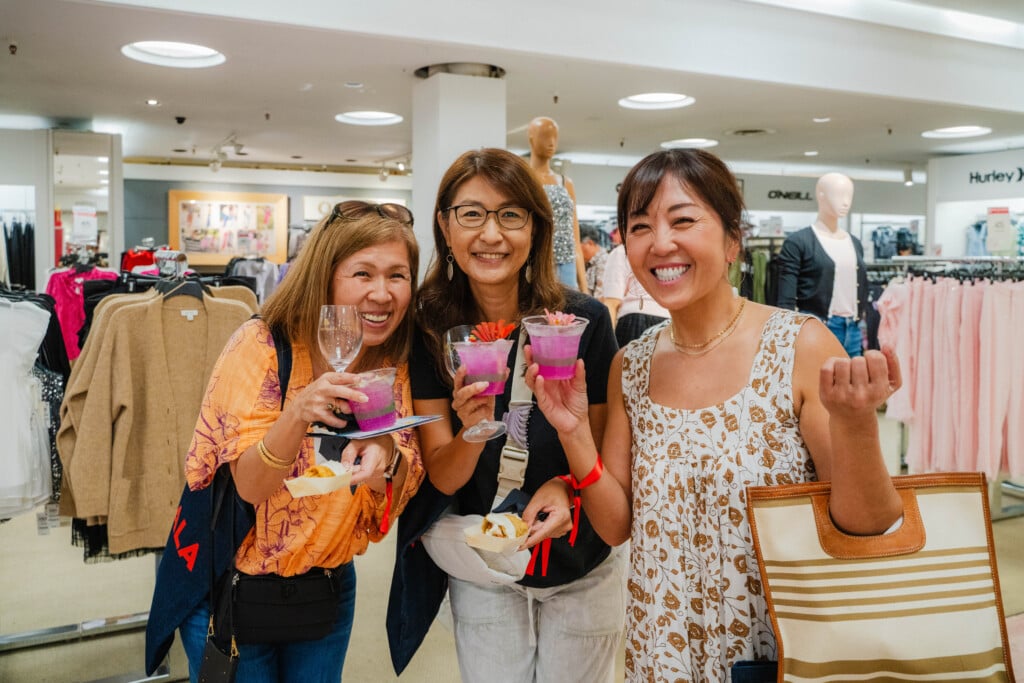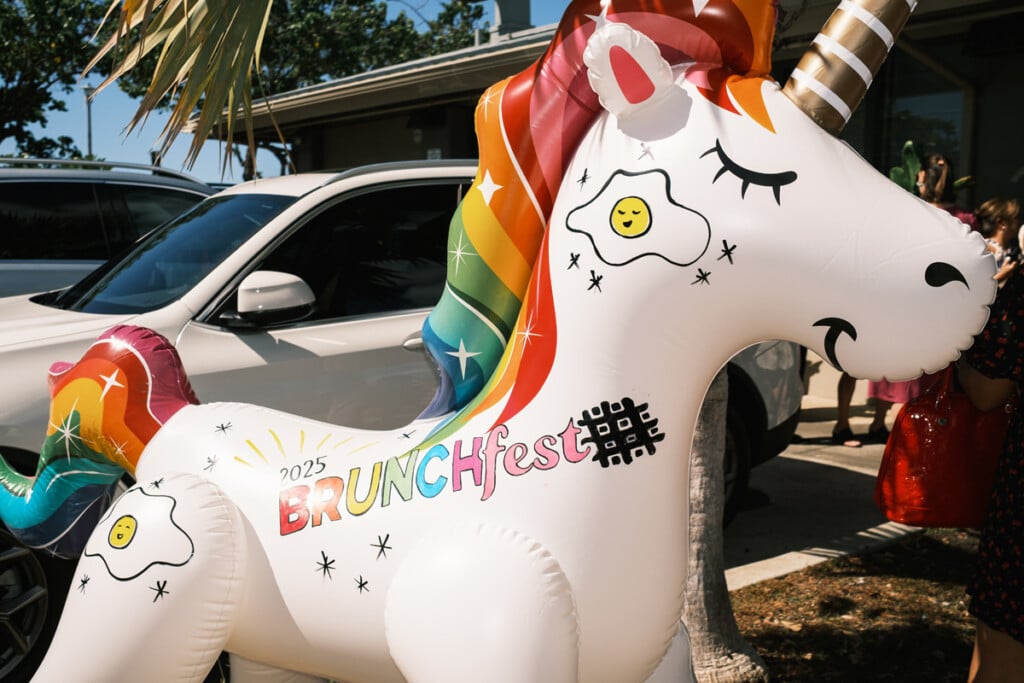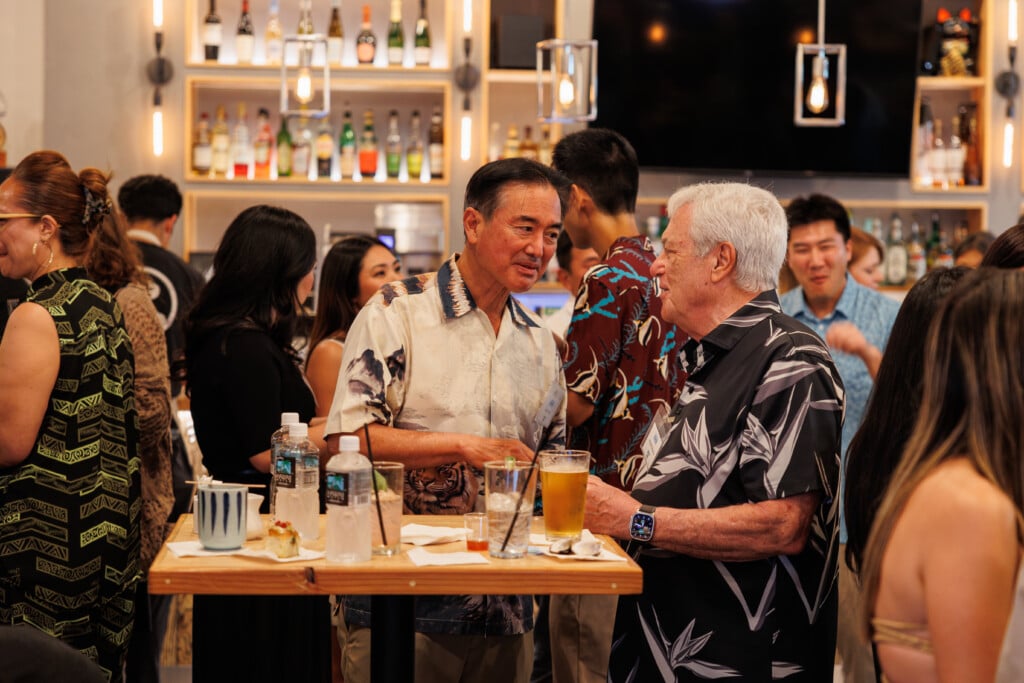Amaterasu, the City’s Newest Sushi Omakase, Is in a Car Showroom
Proof that you can find good sushi in the least likely places.
Editor’s note: Amaterasu closed its Artizen counter in 2024 and planned to reopen at Ala Moana Center.

Photo: Thomas Obungen
You never know where you might find your next standout meal. Amaterasu is an example: Honolulu’s newest sushi counter is inside the luxury car showroom that houses Artizen by MW. It’s carved out of Artizen’s space, a six-seat affair presided over by sushi chef Hideo Ohmiya. The best part? Omakase at Amaterasu costs only $79 for lunch and dinner—for now. The view of $200,000 Lamborghinis and electric Volvo SUVs while you eat is free.
Restaurant pop-up concepts have been peaking in popularity, a trend fueled in Honolulu by Wade Ueoka and Michelle Karr-Ueoka. Including Ohmiya’s, the husband-and-wife chef-owners of Artizen and MW Restaurant have now hosted three sushi pop-ups at the counter inside Velocity Honolulu. The first was by Atsushi Kumagai, whose @sushi needed a home while Kumagai prepared to open at Waterfront Plaza. The second was roving pop-up chef Angie Lee’s Tsuki Maki.
Amaterasu is Ohmiya’s first solo venture. He made sushi at Robata Jinya before this, and before that, trained at sushi restaurants in San Francisco and his native Japan. His specialty at Amaterasu is seasonal sushi omakase, though you can order nigiri by the piece, even without the omakase, including at Artizen’s nearby tables.

Photo: Thomas Obungen
The dining arrangement feels spacious. We take our seats at the Amaterasu sushi counter, selections of gleaming cars on our left and Artizen’s delectable desserts at our backs. Ohmiya greets us with a warm smile and light conversation. He assembles our appetizers while we ooh and giggle over a candy-apple red Maserati, and then the meal begins.
SEE ALSO: A Former Sushi Chef Sells and Sharpens Knives at Aframes in Kalihi
Long plates hold a sequence of small appetizers: two pieces of fresh saba, a thick slice of tamagoyaki, salmon and ‘ahi karaage in a thick sauce, and pickled cucumbers with toasted sesame seeds. The progression from clean to sweet, then umami from the dashi-based karaage sauce, ends nicely with the tart and crunchy namasu.
Ready for more, we ask what is shun or at its peak flavor. “Isaki,” Ohmiya replies. He deftly scores the pinkish-white flesh and brushes the fish with his house-made dashi soy. When he places the shimmering nigiri on our plates, soy sauce nestles in the tiny slits under a small mound of momiji oroshi, grated daikon blended with red pepper for a color reminiscent of autumn leaves.

Photo: Maria Burke
The first thing that hits me is the taste of the rice. It’s perfectly warm and sticky, with deeply flavored grains that are sweet but not sugar-sweet, with a comforting dimension. A pop of wasabi highlights the firm, sweet fish, its salinity bouncing off the finish of shoyu and lingering with peppery bitterness.
Ohmiya combines Tsuyahime rice—known for its particular grain size, taste, smell and stickiness—with different blends of vinegars to complement the different seafood. Sometimes it’s a combination of rice vinegar and sherry, trending now in Tokyo and a nice change from rice vinegar alone. Other times it’s rice wine and balsamic vinegar. The results highlight the qualities of each piece of seafood.

Kaua‘i shrimp nigiri with uni butter. Photo: Thomas Obungen
The progression of nigiri continues. While isaki set the tone, other standouts include melt-in-your-mouth aori ika, a pricey bigfin reef squid; firm yet juicy akami or red meat ‘ahi paired with balsamic-laced rice, which brings out maximum sweetness; thinly butterflied Kaua‘i shrimp torched with garlic uni butter and more. Soy-marinated ikura and uni kept in nitrogen water together satisfy, but these usual suspects are outshined by a simple charred hotate scallop nigiri and, toward the end, a cigar-style hand roll of negi scallions and toro—creamy, crunchy and delightful.
SEE ALSO: Fujiyama Texas Izakaya Now Serves Japanese Breakfast in McCully

Photo: Maria Burke
As with the flavors he brings out in his omakase, Ohmiya chose the name of his sushi counter with complete intention. Ama refers to the female freedivers who collect seafood and are frequently overlooked in a male-dominated fishing industry. Terasu means to shine brilliantly. Amaterasu is also a homonym for the Shinto goddess who created Japan. Ohmiya says the name is an homage to his mother, a single parent of four children and his unsung hero. The nuances of flavors feel like a reverence of the feminine—delicate yet bold, unique and effortless.
There is a softness to his approach and a confidence in his flavors, a juxtaposition that, especially for the price and setting, is quite thrilling. From Oct. 1, the price of the Amaterasu sushi dinner omakase will increase to $120. For this, Ohmiya promises a more modern, fusion approach, with ingredients like foie gras and techniques like smoking entering the picture. Lunch will remain at $79. I’m looking forward to seeing more from him. I have a feeling he’s just getting started.
Open Wednesday to Saturday from 11 a.m. to 9 p.m., last reservation 7 p.m., 888 Kapi‘olani Blvd. inside Artizen by MW, (808) 570-4200, @amaterasushi808

